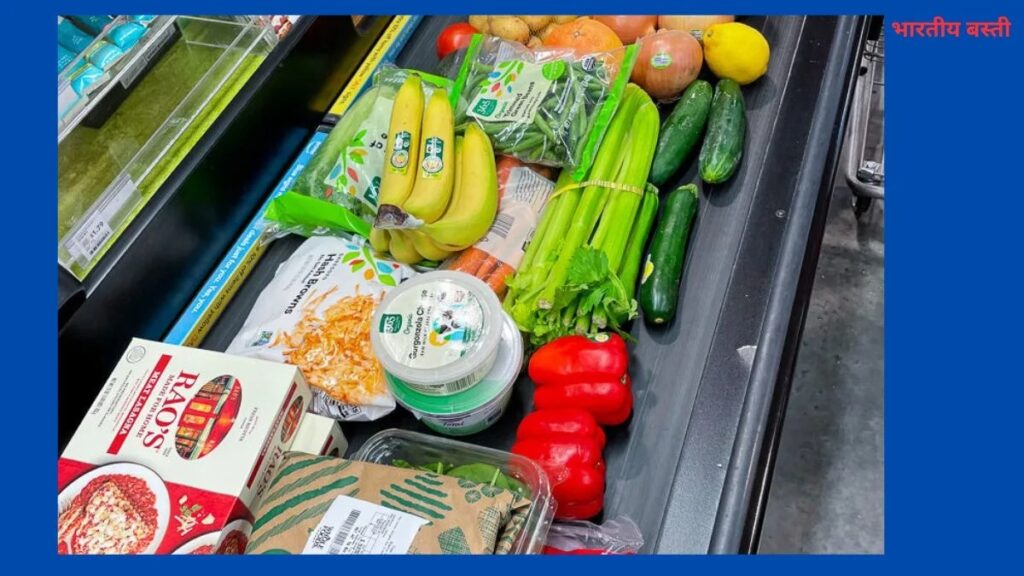Want to cut your grocery bill without sacrificing quality? Discover 8 smart, realistic ways to save money on groceries and shop smarter every week.
Grocery prices are rising, and it feels like your cart is getting smaller while your total at checkout keeps growing. You’re not alone if you’ve found yourself wondering how one bag of groceries can cost so much.
Many households are feeling the financial squeeze, and food costs are one of the most noticeable budget-busters. But here’s the good news: you can take control.
In this blog, you’ll learn real-life strategies to save money on groceries—no extreme couponing or strict meal plans required. These are simple, effective tips that have helped everyday shoppers cut down on food expenses without sacrificing convenience or quality.
1. Make a Simple Grocery List
One of the easiest ways to save money on groceries is by making a weekly grocery list. It may sound basic, but it’s a powerful tool for avoiding impulse purchases.
I used to head to the store with no plan, grabbing whatever looked good. My grocery bill always came as a surprise and not in a good way. Once I started using a shopping list, everything changed.
Why it works:
- You stay focused and avoid grabbing unnecessary items
- You reduce food waste by only buying what you’ll use
- You make faster, less stressful grocery runs
2. Buy in Bulk
Buying in bulk is a classic money-saving strategy but only when done wisely.Stocking up on long-lasting essentials like:
- Rice
- Pasta
- Dried beans
- Frozen vegetables
- Toilet paper & paper towels
These can lead to significant savings over time.But be careful don’t bulk-buy perishables unless you know you’ll use or freeze them. I once bought a huge bag of salad greens that spoiled within days.

Bulk buying saves money when:
- The cost per unit is lower
- The items are shelf-stable or freezable
- You portion items for easier use
3. Choose Store Brands Over Name Brands
If you’re skipping store-brand products because you think they’re lower quality, think again.Private label groceries are often made by the same manufacturers as name brand items with nearly identical ingredients.
Switching to store brands can save you 10–30% on your grocery bill without changing your eating habits.Start with:
- Milk and dairy
- Canned goods
- Pasta and grains
- Household essentials (cleaners, paper goods)
Try a side-by-side taste test you might not notice a difference, but your wallet will.
4. Avoid Pre-Cut and Packaged Foods
Convenience foods cost more period. Pre-chopped vegetables, pre-shredded cheese, and ready-to-eat salads may save time, but they cost extra and often expire faster.
Instead, buy whole ingredients:
- Buy whole carrots instead of baby carrots
- Buy blocks of cheese and shred them at home
- Wash and chop lettuce instead of buying bagged salad
- Even small swaps can add up to significant monthly savings.

5. Eat Before You Shop
It sounds simple, but never shop on an empty stomach.When you’re hungry, you’re more likely to:
- Overspend on snacks and impulse buys
- Be drawn to sugary or high-calorie convenience foods
- Forget your grocery list entirely
A small snack before shopping like a banana or handful of almonds keeps you focused and intentional. This is one of the easiest hacks for budget grocery shopping.
6. Set a Grocery Budget Goal
Without a clear spending limit, your grocery expenses can easily spiral.Here’s how to set a simple grocery budget:
- Track what you spend for 1–2 months
- Choose a realistic goal
- Adjust based on family size, dietary needs, and meal habits
Benefits of setting a grocery budget:
• Encourages smarter shopping decisions
• Helps prioritize essentials over extras
• Reduces financial stress
You don’t have to be perfect just consistent.
7. Use Cashback and Rewards Apps
Don’t leave money on the table.Cashback and grocery rewards apps can pay you back for everyday purchases.Top apps to try:
- Ibotta: Scan receipts or link loyalty cards for instant cashback
- Fetch Rewards: Earn points for gift cards by uploading your receipts
- Rakuten: Get cashback when you shop online for groceries
- These apps are easy to use and add up quickly. Just make sure you only buy what you need don’t let a cashback offer tempt you into spending more.

8. Plan Meals Around What You Already Have
Before hitting the store, check your pantry and freezer.Meal planning based on what you already own reduces waste and cuts down how much you need to buy.
How to meal plan to save money:
- Start with ingredients you already have
- Build 3–5 meals around those items
- Only buy what’s missing
This reduces unnecessary purchases and ensures you use up what you’ve already spent money on.



